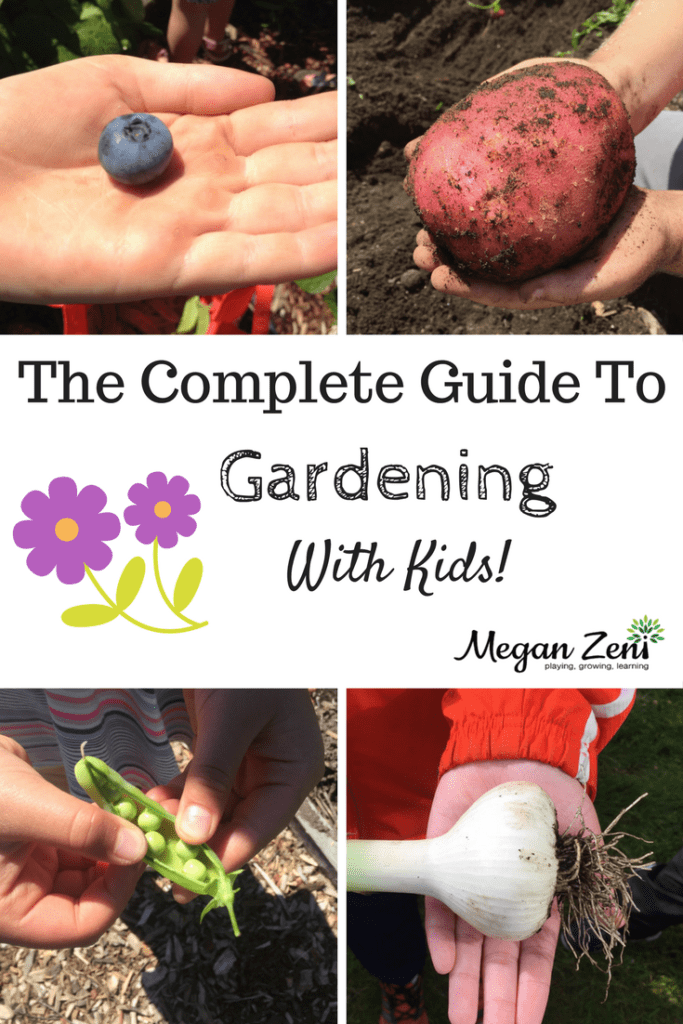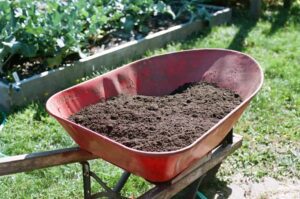- filed under: School Garden Basics
Gardening with kids
I love to garden. I love the peacefulness, I love watching things grow under my care and I love that I can see both immediate and long term results. I garden with children frequently. At home my kids will help out by digging in the beds with me, transplanting established plants or setting in seeds. We garden vertically, in raised beds and right in the ground. I also am lucky to be able to garden at work as the teacher responsible for our community garden plots. We have a very large area to tend to, with over 30 raised beds. And with over 20 classrooms participating every year it means more than 400 children are exposed to the joys and satisfaction of growing their own food. Here is what I have learned in my years of gardening with kids and why it is so very good for them:
Use vegetable starts instead of seeds when you begin
Veggie starts are reasonably inexpensive, grow faster for impatient little people and are less tender and fragile than seeds started indoors that need to then be transplanted by sometimes clumsy hands. That doesn’t mean you shouldn’t plant seeds! There is a lot of learning that comes from planting from seed, but if you yourself are not confident in how to plant and maintain seed life, then go for the veggie starts to give everyone the best chance for success!

Invest in child sized garden gloves
Let’s be honest here. Kids often put their hands in their mouths, noses and everywhere else without properly washing them first. I always have gardening gloves for kids available, particularly in gardens with public access. The risk of insect bites, contact with animal feces and infection from dirty wounds can all be reduced with the proper use of garden gloves. In my experience, nothing is more frustrating for kids than having to work in a pair of adult sized gloves, so get a pair that fit those little fingers. Here are kid gloves I recommend.
Consider gardening with kids a part of their daily physical activity
Depending on where you live, gardening can be a three or four season activity. Children are advised to get at least one hour of vigorous exercise each day- gardening makes that easy! Children as young as 8 can master the wheelbarrow; it’s a great way to work on balance, coordination and build strength. Smaller children enjoy using shovels and pulling weeds as well as watering the beds. All great ways to get fresh air, build strength and get those wiggles out!
They’ll eat what they grow
Over the years I have had enormous success with kids eating traditionally “non kid” foods by growing them and harvesting them with the children. Kale? Delicious! Brussell sprouts? More, please! Children have a natural and enthusiastic taste for healthy foods. They won’t shy away from them when they can rinse them under the hose and eat them on the spot!
Link it to traditional learning
A garden is the ultimate classroom and third teacher. Talk about the area of the plot, estimate how many plants can fit in the bed, use arithmetic to solve how much soil will be required to fill a bed. There is an endless amount of “school” learning that can happen in a garden including Science and Social Studies. Learning about Pioneers? Let’s experience an hour of what life was life in those days and why a crop was so important. Imagine and tell oral stories about what life would be like if this was your only reliable source of food while you work.
Choose themes
Themes are a fun way to engage reluctant gardeners. I’ve helped kids create butterfly gardens, fairy gardens, “pizza” gardens, dinosaur gardens, rainbow gardens, and even a star wars garden. Discussion around which plants are suitable, what the imagined garden will look like and whether it will be edible are all meaningful opportunities to problem solve and develop teamwork skills.
Document the learning
It’s hard to remember how plain and uninspiring a patch of dirt was before you began. Taking pictures along the way helps children reflect on the learning process and makes the learning a visual experience. Looking back on photos tells the story of the learning that has occurred!
Ask for help
Everyone can garden if they want to! If you are not sure how to start, or just want more information, be sure to check out The Classroom Gardener, or contact me here for more information about school-yard gardening support. The Classroom Gardener is a great resource for setting up or rethinking a school garden, with hands on professional development for educators!
If you want to keep up to date on ideas for gardening with kids, come follow me over on Pinterest:


